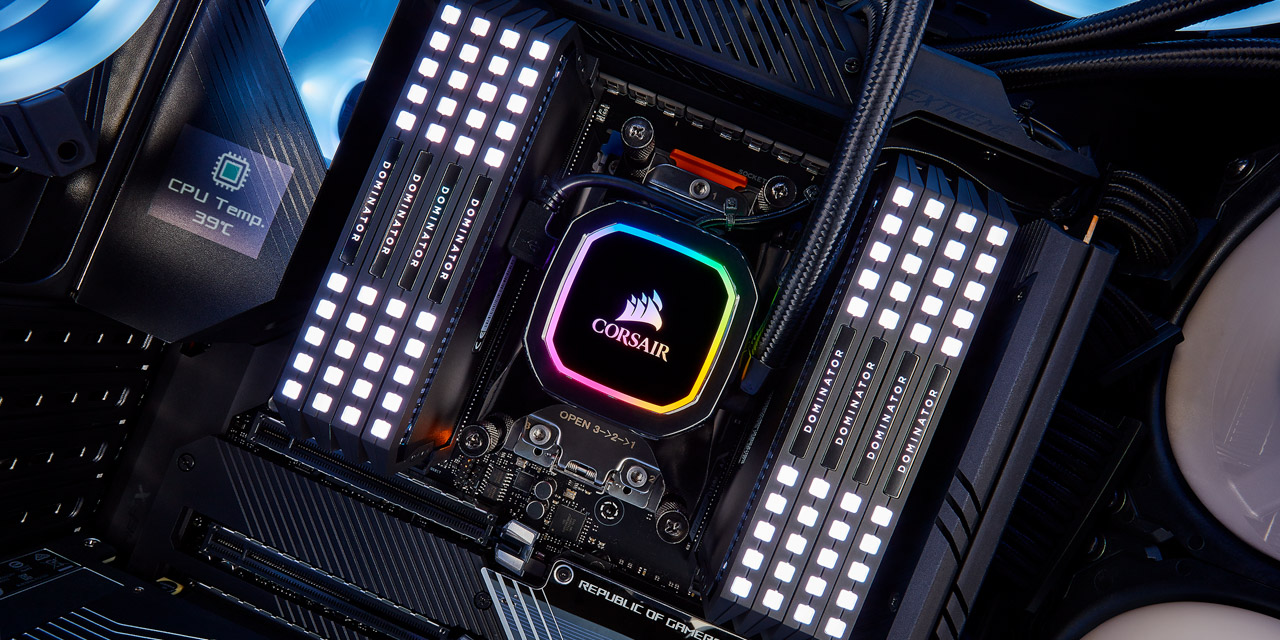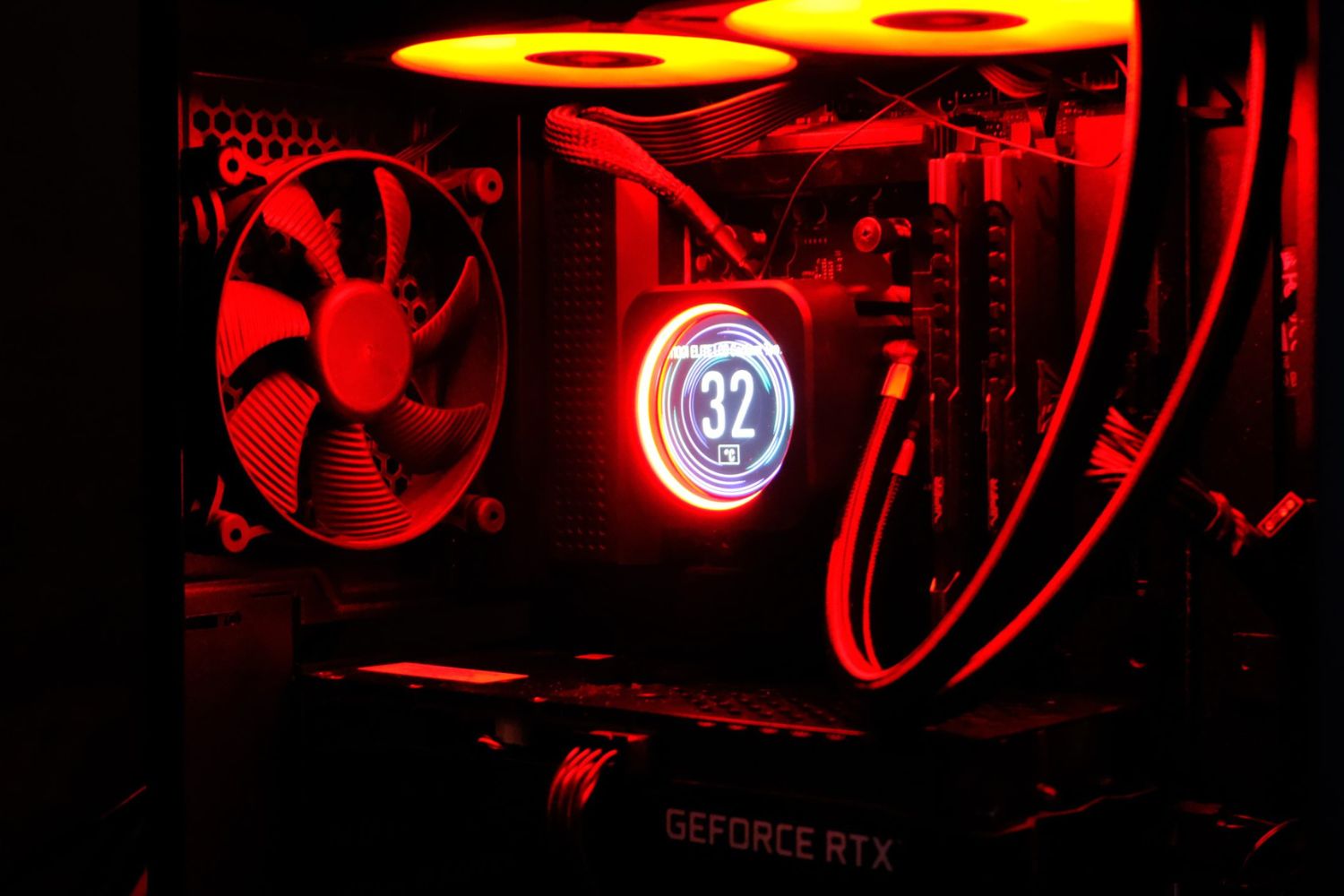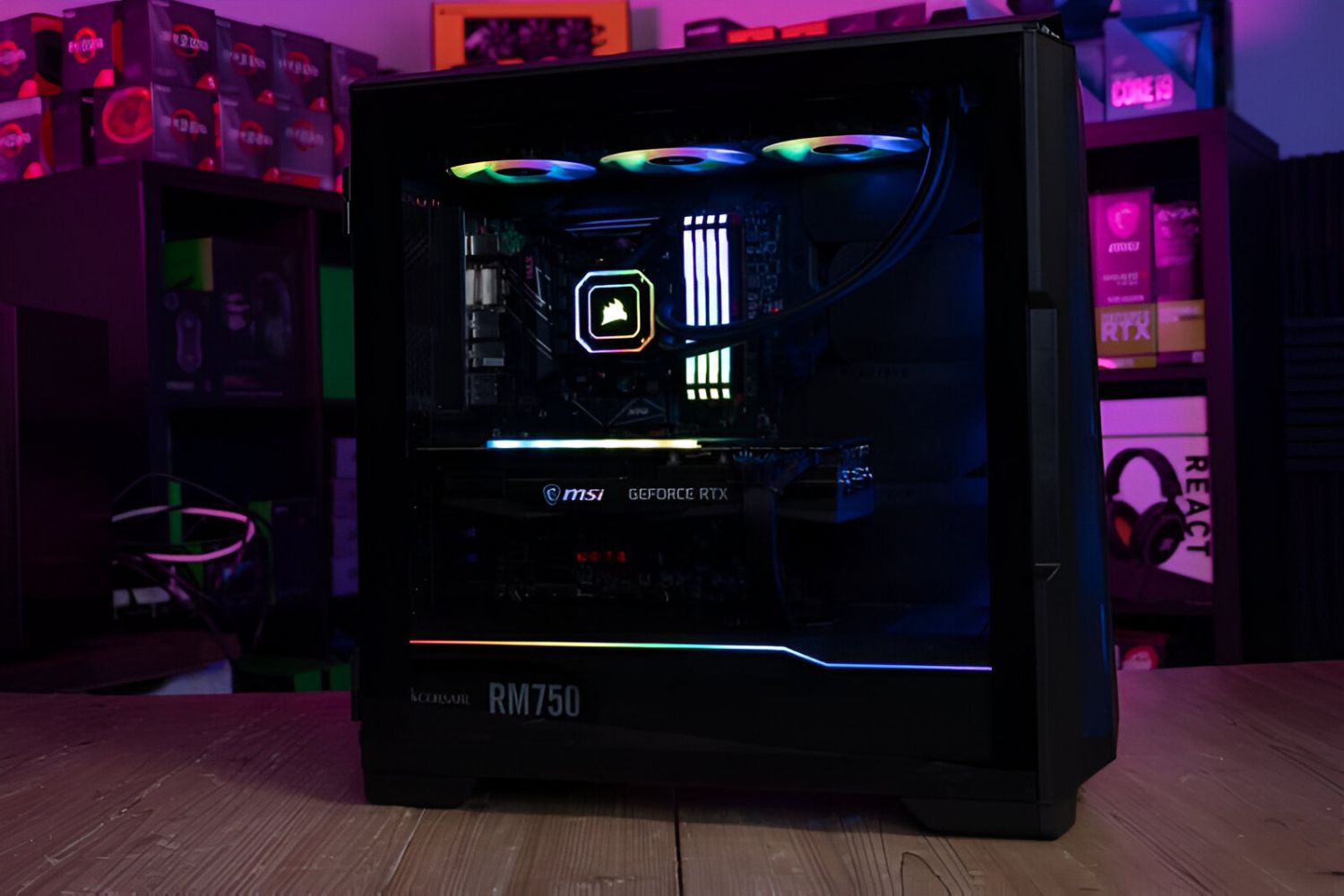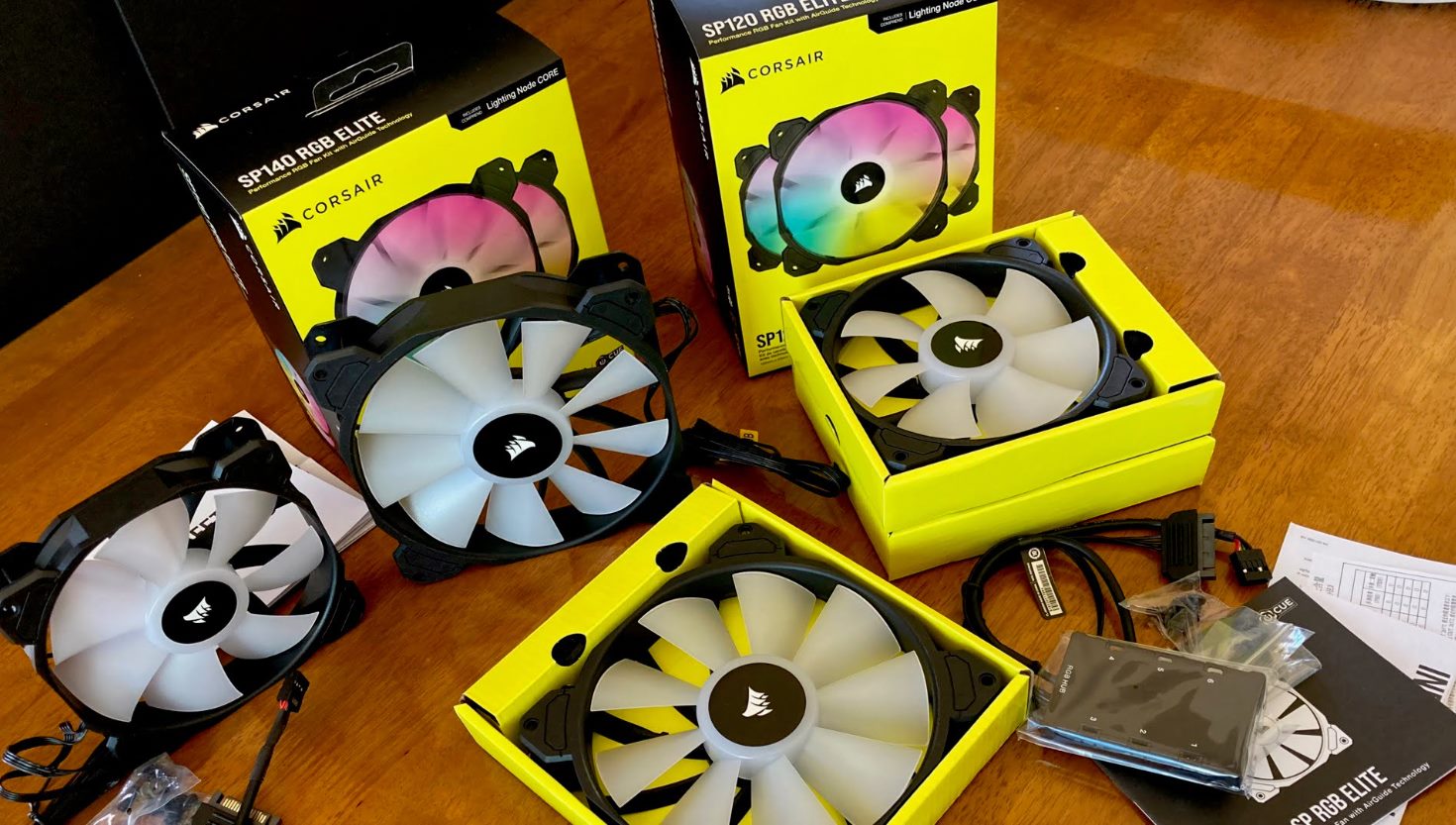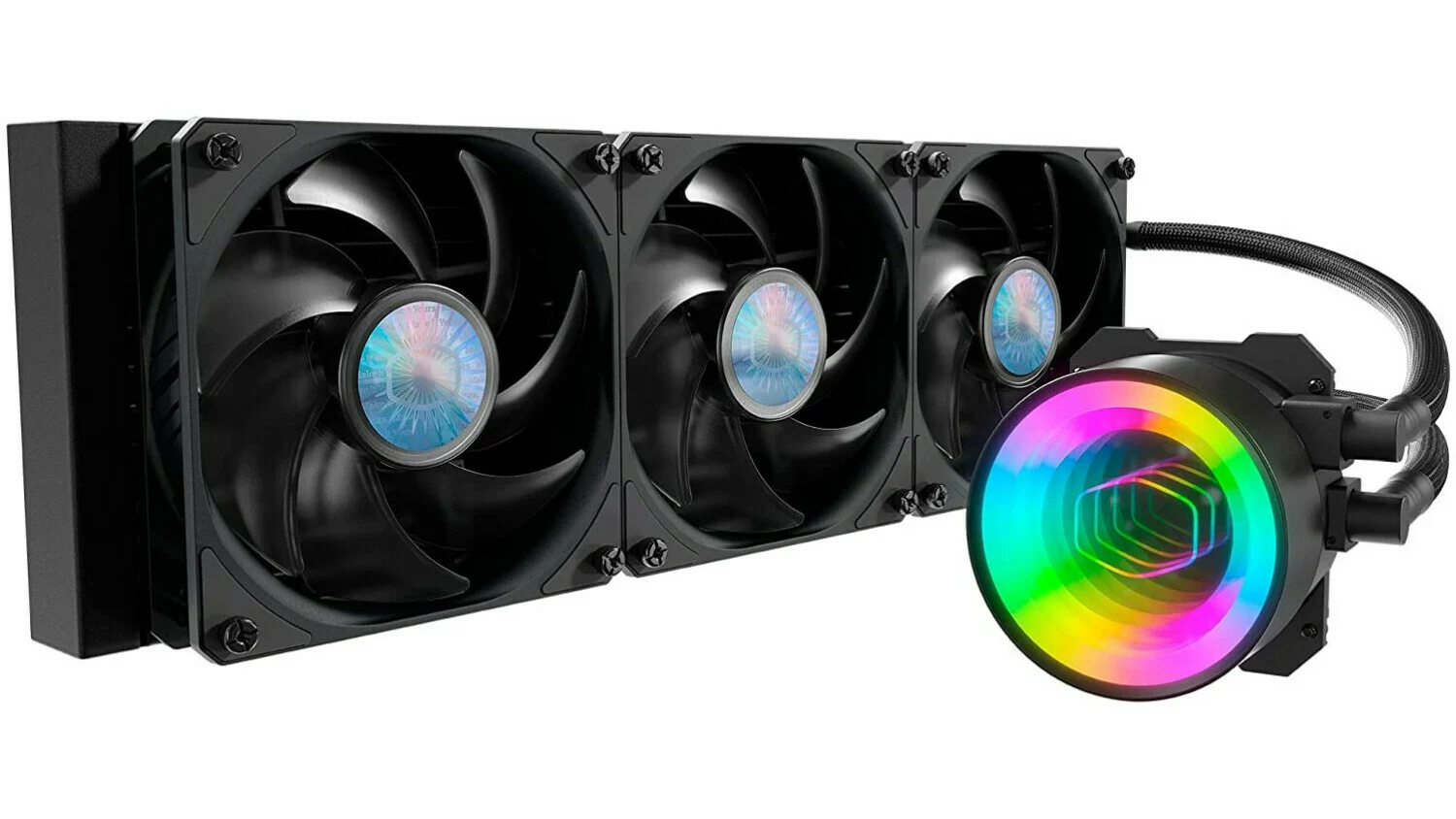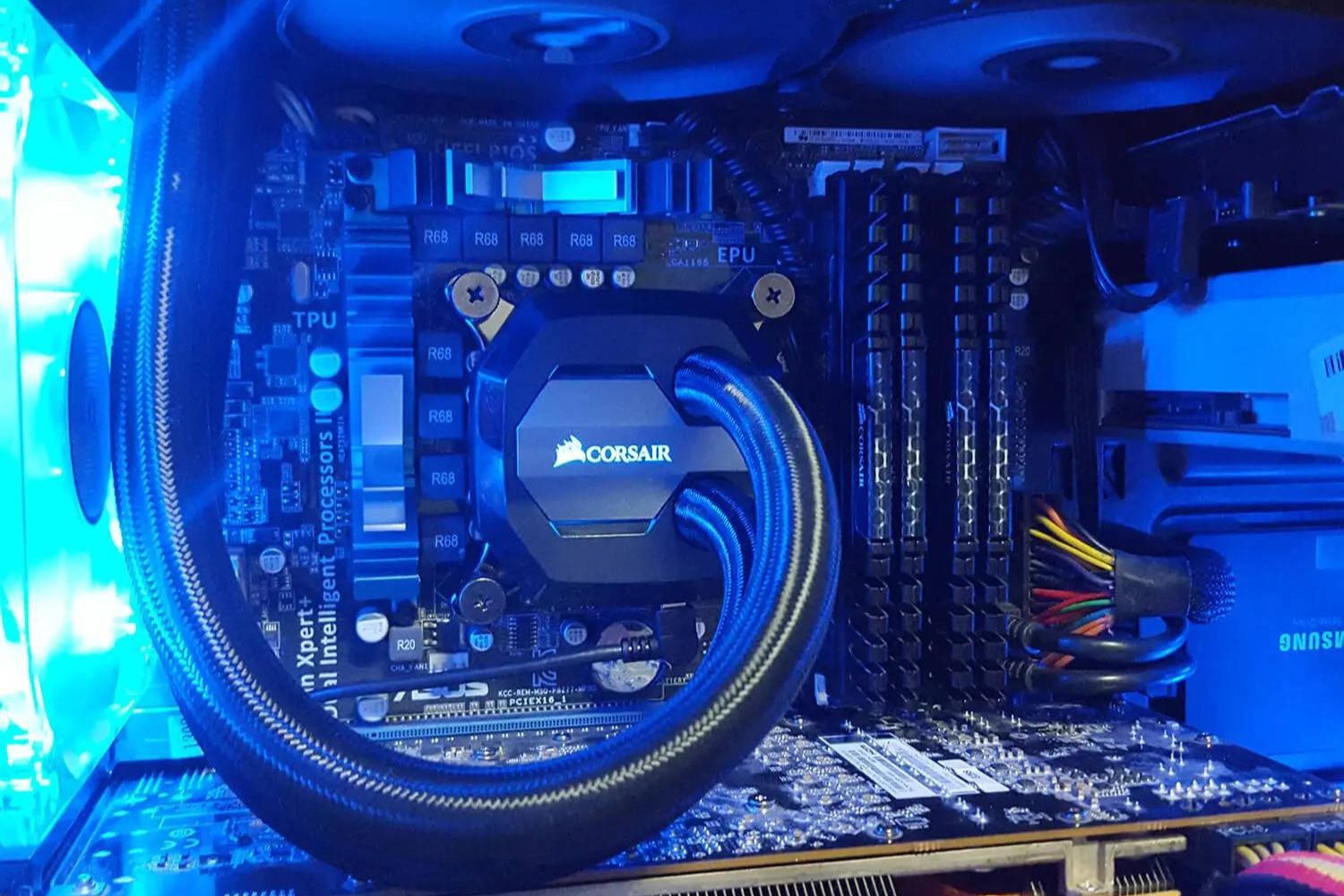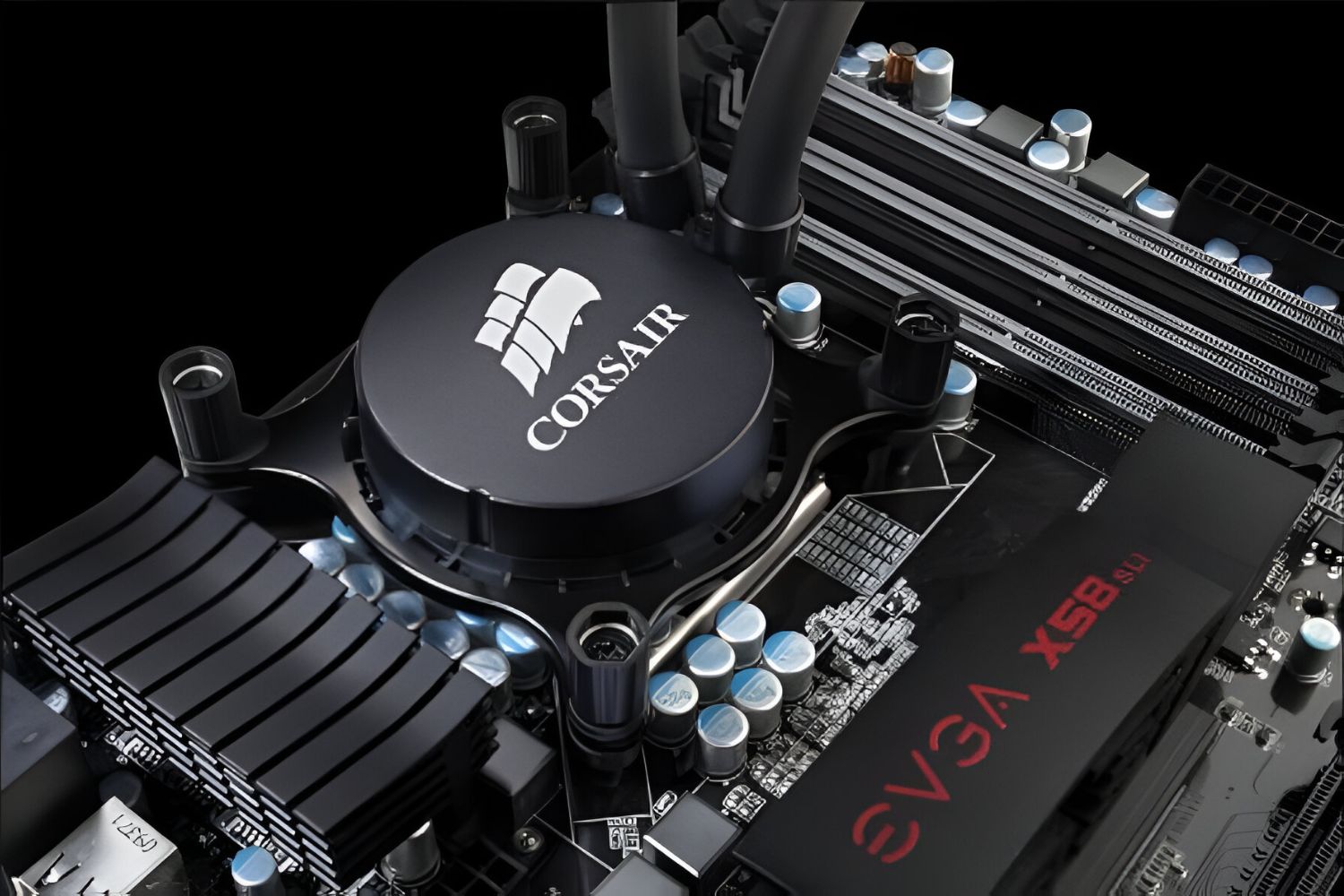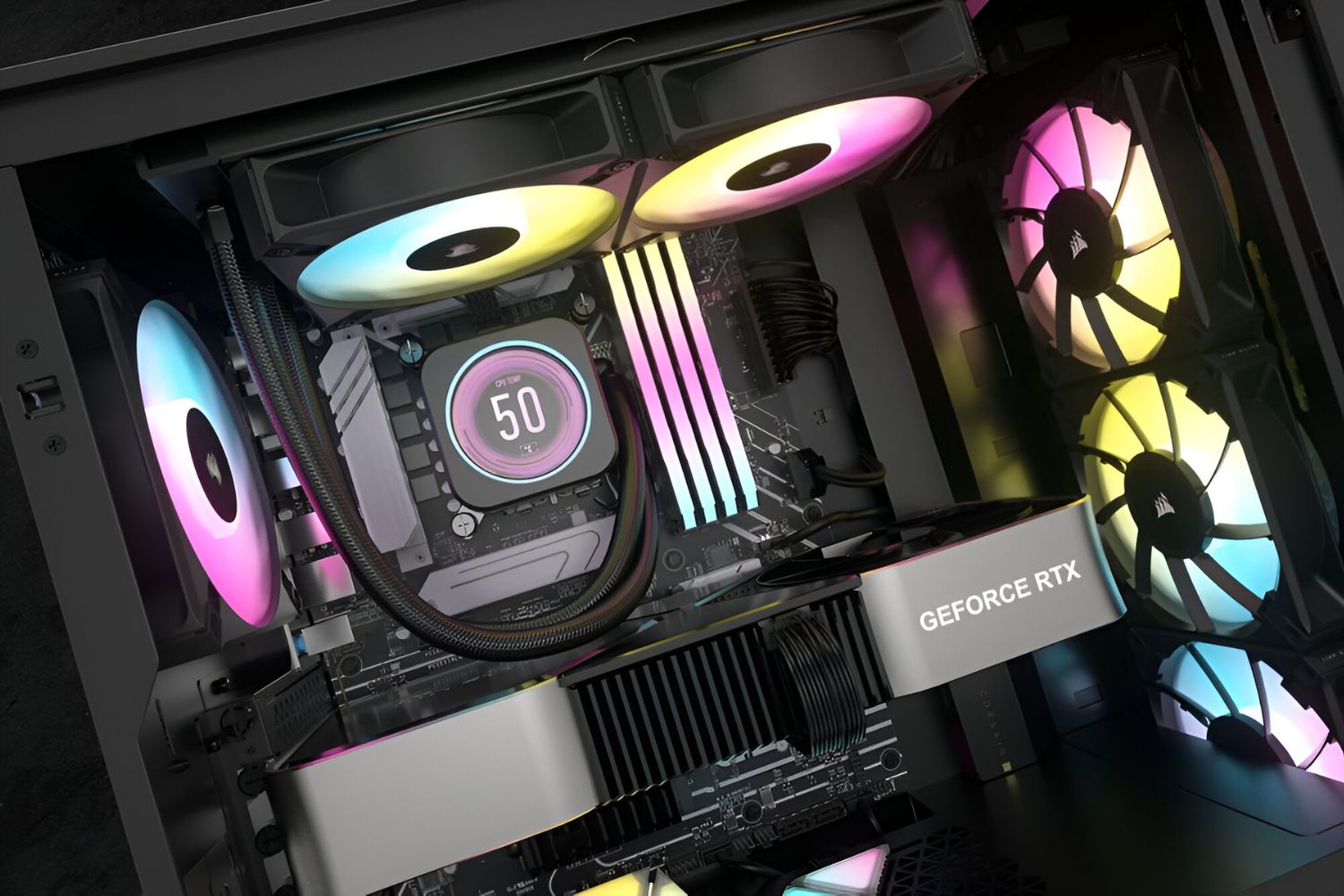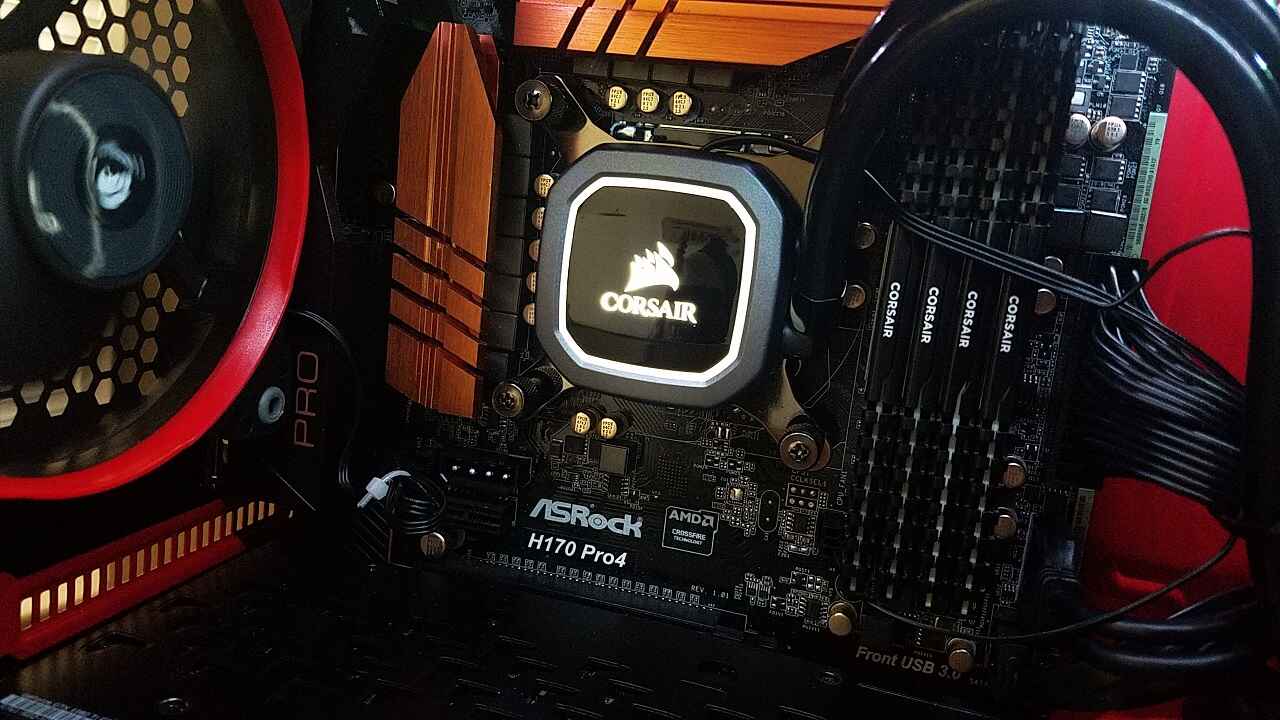Introduction
When it comes to keeping your CPU cool and performing at its best, a reliable CPU cooler is essential. One brand that has become synonymous with high-quality cooling solutions is Corsair. Corsair has been a trusted name in the computer hardware industry for many years, and their CPU coolers are no exception.
In this article, we will explore the benefits of using a Corsair CPU cooler, understand the components that make up these coolers, delve into Corsair’s advanced cooling technologies, and take you through the process of choosing and installing the right Corsair CPU cooler for your needs.
So, why should you consider using a Corsair CPU cooler in the first place? The answer lies in the crucial role that cooling plays in maintaining the longevity and performance of your CPU.
When your CPU is put under heavy load, such as during intense gaming sessions or demanding tasks like video editing, it generates a significant amount of heat. If this heat is not efficiently dissipated, it can lead to decreased performance, system instability, and even permanent damage to your CPU.
A Corsair CPU cooler helps mitigate these risks by effectively dissipating heat from your CPU, keeping it within safe operating temperatures. By doing so, it prevents thermal throttling, where your CPU automatically reduces its performance to prevent overheating. This, in turn, allows your CPU to operate at its full potential, resulting in improved overall system performance.
Besides enhancing performance, a Corsair CPU cooler also helps to prolong the lifespan of your CPU. The constant exposure to high temperatures can cause gradual degradation of your CPU over time. With an effective cooling solution in place, the temperature is kept under control, reducing the wear and tear on your CPU and increasing its longevity.
Furthermore, a Corsair CPU cooler can contribute to a quieter and more comfortable computing experience. Stock CPU coolers that come bundled with processors can often produce excessive noise when the CPU is under load. Corsair CPU coolers, on the other hand, are designed with advanced noise reduction features, such as high-quality fans and low-noise heat sinks, to provide efficient cooling with minimal noise output.
In the next sections, we will dive deeper into the various components that make up a Corsair CPU cooler, explore Corsair’s cutting-edge cooling technologies, and guide you through the process of selecting and installing the perfect Corsair CPU cooler for your specific needs.
Benefits of Using a Corsair CPU Cooler
Using a Corsair CPU cooler comes with several advantages that make it a worthwhile investment for anyone seeking optimal performance and longevity for their CPU.
First and foremost, one of the primary benefits of using a Corsair CPU cooler is improved thermal management. Corsair coolers are designed to efficiently dissipate heat away from the CPU, ensuring it operates within safe temperature ranges. This prevents thermal throttling and maintains consistent performance, even during intense tasks or extended gaming sessions.
Another significant benefit is the reduction of system noise. Stock CPU coolers are often not designed with noise reduction in mind, resulting in loud fan noises that can be distracting and disruptive. Corsair CPU coolers, on the other hand, are engineered to provide efficient cooling while minimizing noise levels. Whether you’re working, gaming, or simply browsing the web, the low-noise design of Corsair coolers provides a quieter computing experience.
In addition to improved temperature control and reduced noise, Corsair CPU coolers also bring aesthetic appeal to your system. With visually appealing designs and customizable RGB lighting options, Corsair coolers can add a touch of style to your PC build. Whether you want a sleek and minimalistic look or a vibrant and eye-catching setup, Corsair offers a range of aesthetically pleasing options to suit different preferences.
Furthermore, Corsair CPU coolers are known for their durability and reliability. These cooling solutions are built using high-quality materials and undergo rigorous testing, ensuring long-lasting performance and peace of mind. With a Corsair cooler, you can trust that your CPU will be protected and perform at its best for years to come.
Another noteworthy benefit is the versatility offered by Corsair CPU coolers. The brand provides a range of options to choose from, including air coolers and liquid cooling solutions. This allows users to select a cooler that best matches their specific needs and system requirements. Whether you have a compact build that requires efficient space utilization or a high-performance setup that demands maximum cooling capacity, Corsair has a cooler to suit your individual needs.
In summary, using a Corsair CPU cooler offers several benefits, including improved thermal management, reduced system noise, enhanced aesthetics, durability, and versatility. By investing in a Corsair CPU cooler, you can ensure that your CPU operates at optimal temperatures, delivers consistent performance, and remains protected for a long time to come.
Understanding the Components of a Corsair CPU Cooler
A Corsair CPU cooler is comprised of various components working together to effectively cool your processor. Understanding these components will help you make an informed decision when selecting the right Corsair cooler for your needs.
The primary components of a Corsair CPU cooler include heat sinks, fans, and in some cases, water cooling systems. Let’s take a closer look at each of these components:
1. Heat Sinks: Heat sinks are an essential part of any CPU cooler. They are designed to absorb and dissipate heat away from the CPU. Corsair offers a range of heat sinks, including air-based heat sinks and liquid cooling blocks. These heat sinks are made from high-conductivity materials, such as copper or aluminum, to efficiently transfer heat away from the CPU and into the surrounding air or liquid.
2. Fans: Fans play a critical role in improving air circulation within the CPU cooler. Corsair CPU coolers are equipped with specially designed fans that provide efficient cooling while minimizing noise levels. These fans help to draw cool air towards the heat sink, expel hot air, and maintain a steady airflow over the CPU. Corsair fans often feature advanced technologies, such as static pressure optimization and quiet operation, to deliver optimal cooling performance.
3. Water Cooling Systems: Corsair is well-known for its advanced water cooling solutions. These systems use a combination of water blocks, pumps, radiators, and tubing to dissipate heat from the CPU. Water cooling offers superior thermal performance compared to air cooling and is popular among enthusiasts and overclockers who push their CPUs to the limits. Corsair’s water cooling systems are precisely engineered for maximum efficiency and reliability, ensuring excellent cooling performance for even the most demanding setups.
It’s important to note that Corsair CPU coolers often come as complete packages, including all the necessary components for easy installation. This eliminates the need for individually sourcing and assembling separate components, making it more convenient for users.
Moreover, Corsair consistently incorporates innovative technologies into their CPU coolers to enhance performance and user experience. These technologies may include features like customizable RGB lighting, software integration for monitoring and controlling cooling performance, and additional noise reduction measures.
Understanding the various components of a Corsair CPU cooler is essential in choosing the right cooler for your specific requirements. Whether you prioritize noise reduction, maximum cooling capacity, or aesthetic appeal, Corsair offers a diverse range of options that cater to different user preferences and system configurations.
Heat Sinks and Their Importance in the Cooling Process
Heat sinks are a crucial component of the cooling process in a Corsair CPU cooler. They are designed to efficiently dissipate heat away from the CPU, allowing for optimal performance and preventing overheating.
The main function of a heat sink is to absorb the heat generated by the CPU and transfer it to the surrounding air or liquid. This is achieved through a combination of thermal conductivity and surface area. Corsair heat sinks are typically made from highly conductive materials, such as copper or aluminum, which effectively transfer heat away from the CPU.
The heat sink’s surface area is also a critical factor in its efficiency. Corsair employs various fin designs and configurations to maximize the surface area exposed to the surrounding medium. This increased surface area allows for better heat dissipation, as more contact points are available for the heat to transfer to the air or liquid.
Heat sinks work in conjunction with other components, such as fans or water blocks, to facilitate the cooling process. When the CPU generates heat, it is conducted through the CPU’s metallic heat spreader and transferred to the heat sink. The heat sink then dissipates this heat by allowing the surrounding air or liquid to absorb it.
Air-based heat sinks commonly found in Corsair CPU coolers utilize the surrounding air to carry away the heat. The fans within the cooling system help to enhance air circulation, ensuring a continuous supply of cool air over the finned surface of the heat sink. This air flow facilitates the transfer of heat from the heat sink to the air, effectively cooling the CPU.
On the other hand, Corsair’s water cooling systems employ liquid-filled loops to carry away heat from the CPU. In these systems, the heat from the CPU is transferred to a water block, which is mounted directly on top of the CPU. The heat is then conducted through the water block into the liquid that flows through the loop. The hot liquid then travels to a radiator where it is cooled by the surrounding air or liquid, removing the heat from the system.
The importance of heat sinks in the cooling process cannot be overstated. Without a properly functioning heat sink, the CPU would quickly overheat, leading to reduced performance and potential damage. Investing in a high-quality Corsair CPU cooler ensures that the heat generated by the CPU is efficiently dissipated, allowing the CPU to operate within safe temperature ranges and maintain optimal performance.
In summary, heat sinks are a critical component in the cooling process of a Corsair CPU cooler. Whether air-based or part of a liquid cooling system, heat sinks play a vital role in transferring heat away from the CPU, ensuring its proper functioning and preventing thermal damage.
Fans and Their Role in Improving Air Circulation
Fans are an essential component of a Corsair CPU cooler, playing a crucial role in improving air circulation and facilitating efficient cooling. These fans contribute to maintaining low temperatures and optimal performance for your CPU.
The primary function of fans in a CPU cooler is to increase airflow over the heat sink, aiding in the dissipation of heat. Corsair CPU coolers are equipped with specially designed fans that are engineered for both high-performance cooling and reduced noise levels.
By strategically positioning the fans within the cooling system, Corsair ensures a continuous flow of cool air reaches the heat sink. As the fans run, they draw ambient air into the cooler, pushing it through the heat sink fins. This increased airflow allows for enhanced heat transfer and more efficient cooling.
Corsair CPU cooler fans are designed to generate high static pressure, allowing them to forcefully move air through the tightly-spaced fins of the heat sink. Higher static pressure ensures that the air can effectively pass through the fins, reaching all areas, and maximizing heat dissipation.
In addition to static pressure, Corsair fans also incorporate advanced noise reduction technologies. These technologies include specially designed fan blades, rubber dampeners, and optimized motor operation to minimize noise output while maintaining excellent cooling performance.
The reduced noise levels provided by Corsair fans significantly contribute to a quieter computing experience. This can be especially beneficial for users who require a peaceful working or gaming environment without the distraction of excessive fan noise.
Corsair offers a range of fan options, including various sizes and fan speeds, to cater to different cooling requirements and system setups. Users can choose between high-performance fans to maximize cooling capacity or quieter fans for a more silent operation, depending on their specific needs.
It is worth noting that Corsair fans are often designed to be RGB compatible, offering customizable lighting options to enhance the visual aesthetics of your PC. These RGB fans can be synchronized and controlled through Corsair’s software, allowing you to personalize your system’s look and create stunning lighting effects.
In summary, fans are an integral component of Corsair CPU coolers, playing a vital role in improving air circulation and cooling efficiency. By utilizing high static pressure and implementing noise reduction technologies, Corsair fans provide effective cooling performance while maintaining low noise levels. Whether you prioritize cooling performance, noise reduction, or customization options, Corsair offers a diverse range of fan options to suit your specific needs.
Water Cooling Systems and How They Work
Water cooling systems, also known as liquid cooling systems, are an advanced cooling solution offered by Corsair. These systems harness the power of liquid to efficiently dissipate heat from the CPU, resulting in enhanced cooling performance compared to traditional air-based CPU coolers.
The principle behind water cooling is relatively straightforward. A water block, which contains channels and fins, is placed on top of the CPU. This block is responsible for directly transferring heat from the CPU to the liquid coolant. Corsair constructs their water blocks using materials with high thermal conductivity, such as copper, to optimize heat transfer.
The liquid coolant, usually a mixture of distilled water and additives to prevent corrosion and promote better heat transfer, flows through a closed loop system. This loop includes tubing, a pump, a radiator, and fans.
As the liquid coolant absorbs the heat from the water block, it is pumped through the tubing and directed to the radiator. The radiator acts as a heat exchanger, utilizing a series of fins to dissipate the heat into the surrounding air. Corsair’s radiators are designed for maximum surface area, facilitating efficient heat dissipation.
Once the heat is successfully transferred from the liquid coolant to the radiator, the fans in the cooling system come into play. The fans draw cool air from outside the case and pass it through the radiator, allowing the heated coolant to release its heat into the air. This process cools the coolant, preparing it to cycle back to the water block and repeat the cooling cycle.
Corsair’s water cooling systems often feature additional enhancements to optimize performance. These can include larger radiators, more powerful pumps for improved flow rate, and fan control software to adjust fan speeds based on the CPU’s temperature.
Water cooling offers several advantages over air-based cooling. The increased thermal conductivity of liquid coolant allows for more efficient heat transfer, resulting in lower CPU temperatures and better performance. Additionally, water cooling systems often provide reduced noise levels compared to high-performance air coolers, as the fans can operate at lower speeds while still achieving efficient cooling.
Corsair’s water cooling systems are typically designed to be all-in-one solutions, meaning they come pre-filled and require minimal maintenance. This makes them accessible to users who are new to water cooling but still want the benefits it provides.
However, it’s important to note that water cooling systems do require careful installation and proper maintenance to avoid any potential leaks or component failures. Corsair provides detailed instructions and support to ensure a smooth installation process.
In summary, water cooling systems provided by Corsair utilize liquid coolant, a water block, a pump, tubing, and a radiator to efficiently dissipate heat from the CPU. This advanced cooling solution offers improved thermal performance, reduced noise levels, and can be an excellent option for users seeking maximum cooling capacity and optimal CPU performance.
Corsair’s Advanced Cooling Technologies
Corsair is at the forefront of innovation when it comes to CPU cooling technologies. They continuously develop and integrate advanced features into their cooling solutions, ensuring optimal performance, efficiency, and reliability. Let’s explore some of the key technologies that set Corsair’s cooling systems apart.
1. Direct Contact Heat Pipes: Corsair utilizes direct contact heat pipes in many of their air cooler designs. These heat pipes have a direct physical connection with the CPU, allowing for efficient heat transfer. The heat generated by the CPU is quickly conducted through the heat pipes, ensuring rapid and effective dissipation.
2. High Static Pressure Fans: Corsair’s cooling systems often feature fans with high static pressure ratings. These fans are specifically designed to overcome any impedance caused by the fins of the heat sink or the radiator. The high static pressure allows for increased airflow through narrow spaces, improving overall cooling performance.
3. Advanced Fan Blade Design: Corsair’s fans are equipped with advanced blade designs to optimize airflow and reduce noise. These designs focus on generating higher air pressure while maintaining quiet operation. The fan blades are carefully engineered to enhance static pressure, improve air circulation, and minimize turbulence, resulting in more efficient cooling with reduced noise levels.
4. RGB Lighting Integration: Corsair is known for its RGB lighting integration, allowing users to personalize the aesthetics of their systems. Many Corsair cooling solutions feature customizable RGB lighting, enabling users to synchronize lighting effects with other RGB-enabled components, create stunning visual displays, and match their system’s theme.
5. iCUE Software Integration: Corsair’s iCUE software is a powerful tool that provides comprehensive control over cooling performance and lighting effects. Users can monitor and fine-tune fan speeds, customize RGB lighting profiles, and manage system temperatures. The iCUE software ensures seamless integration and synchronization of Corsair cooling systems with other compatible components, creating a unified and visually stunning system.
6. Zero RPM Mode: Some Corsair cooling solutions are equipped with a Zero RPM mode. This feature allows the fans to stop spinning when the CPU is idle or operating within a specified temperature range. The Zero RPM mode minimizes noise output during low-demand periods, providing a quieter computing experience without compromising on cooling performance.
7. Corsair Hydro Series: The Corsair Hydro Series encompasses their range of all-in-one liquid cooling solutions. These water coolers feature high-performance pumps, large radiators, and specially designed water blocks for efficient heat dissipation. The Hydro Series provides excellent cooling capabilities, allowing for lower CPU temperatures and improved overclocking potential.
Corsair’s commitment to advancing cooling technologies ensures that their products not only deliver top-notch cooling performance but also cater to the unique needs and preferences of users. Whether it’s offering high static pressure fans, incorporating RGB lighting options, or providing advanced software control, Corsair’s advanced cooling technologies contribute to maintaining optimal temperatures, reducing noise levels, and enhancing the overall user experience.
Choosing the Right Corsair CPU Cooler for Your Needs
When it comes to selecting the right Corsair CPU cooler, there are several factors to consider. The choice ultimately depends on your specific needs, system requirements, and personal preferences. Here are some key considerations to help guide your decision:
1. Cooling Performance: The cooling performance of a CPU cooler is a crucial factor to consider. Evaluate the intended use of your system and the cooling demands that come with it. If you engage in heavy gaming, overclocking, or intense workloads, you may require a high-performance solution with superior cooling capability. Corsair offers a range of coolers suited for different levels of cooling performance.
2. Form Factor: The physical dimensions of the CPU cooler and your PC case should align to ensure compatibility. Large cooling solutions, such as high-end air coolers or liquid cooling radiators, may demand ample space within your case. Determine the maximum cooler height and radiator size that your case can accommodate before making your selection.
3. Noise Level: Consider the noise output of the CPU cooler, especially if you prioritize a quieter computing experience. Corsair offers cooling solutions with optimized fan designs, low-noise operation, and even zero RPM modes. These features can help keep noise levels to a minimum, ensuring a more peaceful environment during operation.
4. Air or Liquid Cooling: Decide whether you prefer an air cooler or a liquid cooling solution. Air coolers are generally straightforward to install, more cost-effective, and offer reliable cooling performance. On the other hand, liquid cooling systems provide excellent thermal performance, quieter operation, and can be more suitable for those looking to push their CPUs’ limits with overclocking.
5. Aesthetics: Take into account the visual aesthetics of the CPU cooler and how it fits with your overall system design. Corsair offers coolers with customizable RGB lighting, allowing you to align the cooler’s look with your desired theme and create stunning lighting effects. Additionally, consider the overall color scheme and design of the cooler to ensure it complements your system’s style.
6. Budget: Set a budget range for your CPU cooler and choose an option that fits within that limit. Corsair offers coolers at different price points, ensuring that you can find one that meets your budget while still providing reliable performance and cooling capability.
7. Compatibility: Ensure that the chosen CPU cooler is compatible with your CPU socket type. Corsair provides compatibility information for each cooler, making it easier to find the appropriate model for your specific CPU socket.
Taking the time to consider these factors will help you choose the right Corsair CPU cooler that meets your performance needs, fits your system’s physical constraints, offers desired aesthetics, aligns with your budget, and achieves optimal cooling efficiency.
Installing a Corsair CPU Cooler Step-by-Step
Installing a Corsair CPU cooler is a relatively straightforward process. By following these step-by-step instructions, you can ensure a successful installation:
1. Preparation:
Start by gathering all the necessary tools and components for the installation. This may include a screwdriver, thermal paste (if not pre-applied), and any additional mounting brackets or adapters for specific cooler models.
2. Power Off and Unplug:
Before beginning the installation, ensure your computer is powered off and unplugged from the power source. This prevents any accidental electrical damage and ensures your safety during the installation process.
3. Remove Existing Cooler:
If you have a previous CPU cooler installed, carefully remove it by unclipping or unscrewing the mounting mechanism. Gently disconnect any cables or connectors attached to the cooler and set it aside.
4. Clean the CPU:
Thoroughly clean the surface of your CPU using isopropyl alcohol and a lint-free cloth. This removes any residual thermal paste or debris, allowing for optimal thermal transfer between the CPU and the new cooler.
5. Apply Thermal Paste:
If your Corsair CPU cooler does not come with pre-applied thermal paste, apply a small pea-sized drop onto the center of the CPU. Spread it evenly using a card or the provided applicator, ensuring a thin and uniform layer.
6. Install Backplate:
Mount the backplate onto the rear of the motherboard, aligning it with the CPU socket. Insert the screws provided with the cooler through the corresponding holes in the motherboard and secure the backplate in place.
7. Mount the Cooler:
Refer to the specific instructions for your Corsair CPU cooler to determine the correct mounting mechanism. Typically, this involves attaching brackets or standoffs onto the backplate and securing the cooler onto the CPU socket. Follow the provided instructions carefully to ensure a secure fit.
8. Connect Fan and Pump:
If you have a liquid cooling system, connect the pump to the appropriate header on the motherboard or fan controller. Attach the radiator fans either directly to the pump or to the designated fan headers on the motherboard. Ensure that all necessary cables are properly connected and secured.
9. Cable Management:
Organize the cables from the cooler, ensuring that they are neatly routed and do not obstruct any other components or airflow within your PC case. This helps maintain a clean and efficient system setup.
10. Secure and Test:
Double-check that all screws and connections are tight and secure. Close the PC case and reconnect the power cables to your computer. Power on your system and monitor the CPU temperatures to ensure that the cooler is functioning correctly under load.
By following these step-by-step instructions, you can confidently install a Corsair CPU cooler and ensure optimal cooling performance for your processor.
Common Troubleshooting Issues and How to Resolve Them
While Corsair CPU coolers are designed to provide reliable cooling performance, there may be occasional issues that arise during installation or operation. Here are some common troubleshooting issues you may encounter and their possible solutions:
1. High CPU Temperatures:
If you notice unusually high CPU temperatures even after installing a Corsair CPU cooler, there may be a few factors to consider. Check the seating of the cooler to ensure it is securely mounted with proper contact between the CPU and the cooler’s heat spreader. Confirm that thermal paste is applied correctly with an adequate amount. If necessary, reseat the cooler and apply new thermal paste. Also, ensure that the fans are spinning and the pump (in liquid cooling systems) is functioning correctly. Adjust fan speeds or pump settings in the BIOS or Corsair’s software, if available, to ensure optimal cooling performance.
2. Noisy Fan Operation:
If you experience excessive noise coming from the CPU cooler fans, first ensure that the fans are correctly installed and securely connected. Verify that the fan blades and the surrounding area are free from any obstructions or debris that may be causing noise. Adjust the fan speed settings through the BIOS or Corsair’s software to reduce noise levels. Additionally, consider utilizing the fan’s low-noise adapters, if provided, to quieten operation further. In liquid cooling systems, ensure that the pump is functioning correctly and that there are no air bubbles trapped in the system, as this can cause noise.
3. Leaking or Moisture Issues:
In the case of liquid cooling systems, if you notice any signs of leaking or moisture, immediately power off your system and disconnect the cooler. Inspect the connections and tubing for any visible damage or loose fittings. Make sure that the tubing is properly secured and that the fittings are tightened correctly. If you suspect a leak, contact Corsair’s support for further assistance. It is crucial to follow proper installation procedures, including applying the correct amount of thermal paste and avoiding excessive pressure on the cooler or fittings, to prevent leakage.
4. Incompatibility with Motherboard or Case:
If you encounter compatibility issues with your motherboard or case, ensure that you have chosen a Corsair CPU cooler model that is compatible with your motherboard’s CPU socket type. Verify the maximum cooler height and radiator size that your case can accommodate. It is important to research the specifications of your motherboard and case thoroughly before making a purchase. If you realize that the cooler is incompatible, consider choosing a different model or seeking alternative cooling options that fit your system.
5. Installation Errors:
If you face installation errors or difficulties, refer to the specific installation manual provided by Corsair. Follow the instructions step-by-step, ensuring that all components are correctly aligned and secured. Review online resources, video tutorials, or Corsair’s support forums for additional guidance. When troubleshooting installation errors, take extra care not to overtighten screws, as this can damage components or hinder proper fitting.
If you experience any issues that cannot be resolved, it is recommended to consult Corsair’s customer support for further assistance. Their expertise and guidance can help you troubleshoot specific problems and provide solutions tailored to your situation. Remember to take adequate precautions, such as properly grounding yourself, when troubleshooting or handling your PC components.
By familiarizing yourself with these common troubleshooting issues and their resolutions, you can minimize disruptions and ensure optimal performance from your Corsair CPU cooler.
Conclusion
Choosing a Corsair CPU cooler for your system can provide numerous benefits, including improved performance, reduced noise levels, and enhanced longevity for your CPU. Corsair’s commitment to innovation and advanced cooling technologies has made them a leading brand in the computer hardware industry.
By understanding the components of a Corsair CPU cooler, such as heat sinks, fans, and water cooling systems, you can better appreciate how these components work together to ensure efficient heat dissipation, optimal temperatures, and reliable cooling performance.
When selecting a Corsair CPU cooler, consider factors such as cooling performance, form factor compatibility, noise levels, and aesthetic preferences. Corsair offers a diverse range of options to cater to different user needs and system configurations, ensuring you can find the perfect cooler for your specific requirements.
The step-by-step installation guide helps simplify the process of installing a Corsair CPU cooler, ensuring a successful and secure installation that promotes effective cooling performance. By addressing common troubleshooting issues, such as high CPU temperatures, noisy fan operation, leakage, and incompatibility, you can troubleshoot and resolve any problems that may arise during installation or operation.
In conclusion, choosing a Corsair CPU cooler allows you to optimize the performance, reliability, and overall experience of your system. Whether you opt for an air cooler or a liquid cooling solution, Corsair’s advanced technologies, including direct contact heat pipes, high static pressure fans, RGB lighting integration, and user-friendly software control, ensure top-tier cooling performance and customization options.
Investing in a Corsair CPU cooler not only helps maintain safe CPU temperatures and prevent overheating but also enhances the visual appeal of your system. With their dedication to quality and innovation, Corsair continues to provide cutting-edge cooling solutions that meet the needs of gamers, enthusiasts, and professionals alike.







